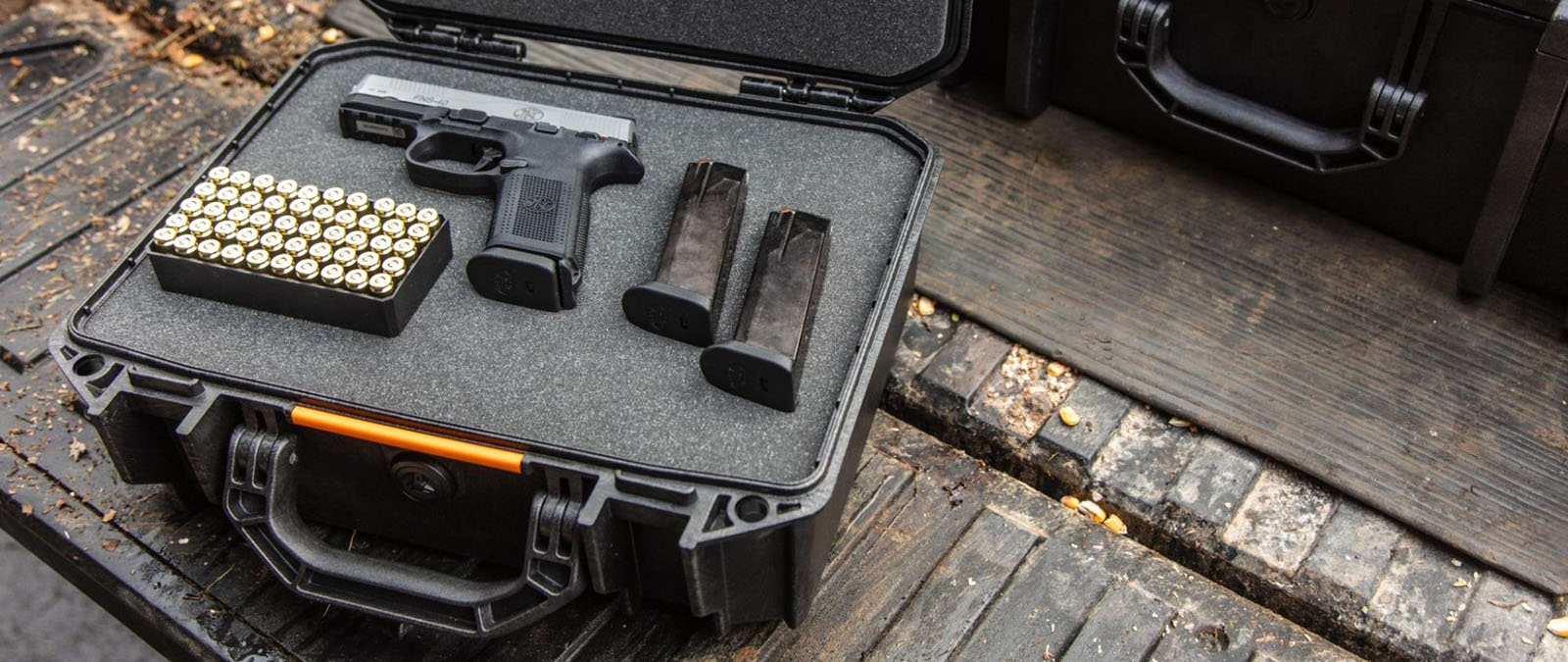7 Tips for Long-Term Gun Storage
August 18, 2022

Keeping your gun dry and protected is a paramount part of gun ownership, whether you’re out in the field or at home. And when you need to store your gun away for some time, knowing you won’t be using it for a while, it takes some extra steps and precautions. So just how do you prepare your firearm for long-term storage? From finding a suitable gun case to cleaning your gun inside and out, here are seven tips for long-term gun storage that will keep it protected until you break it out again.
1. Consider the Storage Space
A gun case can protect your firearms from the elements and from getting into the wrong hands. But while a quick access gun case offers accessibility for home defense, if you own several guns or have an entire gun collection, you may want to consider a larger gun safe to keep your gun equipment, ammo and gun cases. Plus, it can accommodate additional guns as you expand your collection. Ultimately, a gun safe offers a little more extra protection for long-term gun storage.
2. Get Your Gun a Proper Case
Whether you have enough space for a large gun safe or not, your gun needs a hard gun case. You should never store a gun in its original box, especially if it’s made of cardboard. It’s simply not durable enough for long-term gun storage and cardboard can attract moisture that can cause damage to your gun. Instead, it’s best to protect your gun in a waterproof case designed with features like a watertight O-ring seal to keep out moisture and rust-resistant stainless steel hardware.
For long-term gun storage, it’s critical to dismantle a rifle. Choose a foam padded, extra-spacious rifle case that will give ample room for all parts to have their own space without rubbing. When storing a rifle, inside a case or not, many gun owners prefer to keep the muzzle down to prevent oils and lubricants from reaching the stock.
3. Break Down and Clean Your Gun
Before you place your gun in a watertight case for long-term gun storage, break it down and clean it thoroughly. To avoid getting fingerprint oils on the parts, it helps to perform these steps wearing gloves.
Break down the gun completely. Decock the firearm to relieve any tension in the springs and take off the bore. The same goes for hammer springs, firing pin springs and recoil springs.

Clean the gun and bore – meticulously! Anything that is corrosive can damage your gun even when it’s not being used and placed in long-term gun storage. Ideally, you should wipe everything down (wood and plastic parts included) with a silicone gun cleaning cloth like those by Hoppe’s No. 9, Pro Shot or Birchwood Casey. Then, wipe it all down with a fast-drying, ammonia-free cleaner to prevent any carbon, copper, lead and plastic from attracting moisture.
4. Lubricate the Metal Parts
Next, you want to lubricate and oil up all the metal parts. For metal components, apply a thin layer of lubricant gun grease to all exposed areas, sealing in the surface and protecting it against the elements.
5. Wax Any Wood Stocks and Handles
Rub wax or a tiny bit of linseed oil into any wood components like wood stocks and handles. Of course, allow plenty of time for it to absorb and dry before placing it in the case and long-term storage. This step will prevent swelling or cracking. Also, remember to remove the receiver and barrel, waxing the wood beneath, too.
6. Prevent Contaminants from Inside the Gun Case
Make sure you store with a corrosion intercept to ensure no contaminants harm your gun during storage. This will ensure that harmful contaminants are neutralized and your firearm will stay clean. Also a good idea to throw some desiccant gel packs (those little bags you sometimes find inside a new box of shoes) help absorb any lingering moisture inside your gun case. When combined with an anti-corrosion kit, it will keep your firearms fully protected inside the gun case.
7. Check in on Your Gun Periodically
Now that you’ve prepared your gun for long-term storage, you can set and forget it, right? Not really. In fact, it’s wise to check in on it periodically to ensure that it’s not in fact rusting or in need of another cleaning and oiling. So set a reminder for yourself in your calendar and check in on it once every six to 12 months – just to be safe.
RELATED PRODUCTS

SIGN UP FOR EXCLUSIVE OFFERS
Sign up for our newsletter and get exclusive access to new product launches, special offers and much more.
RELATED BLOGS


















